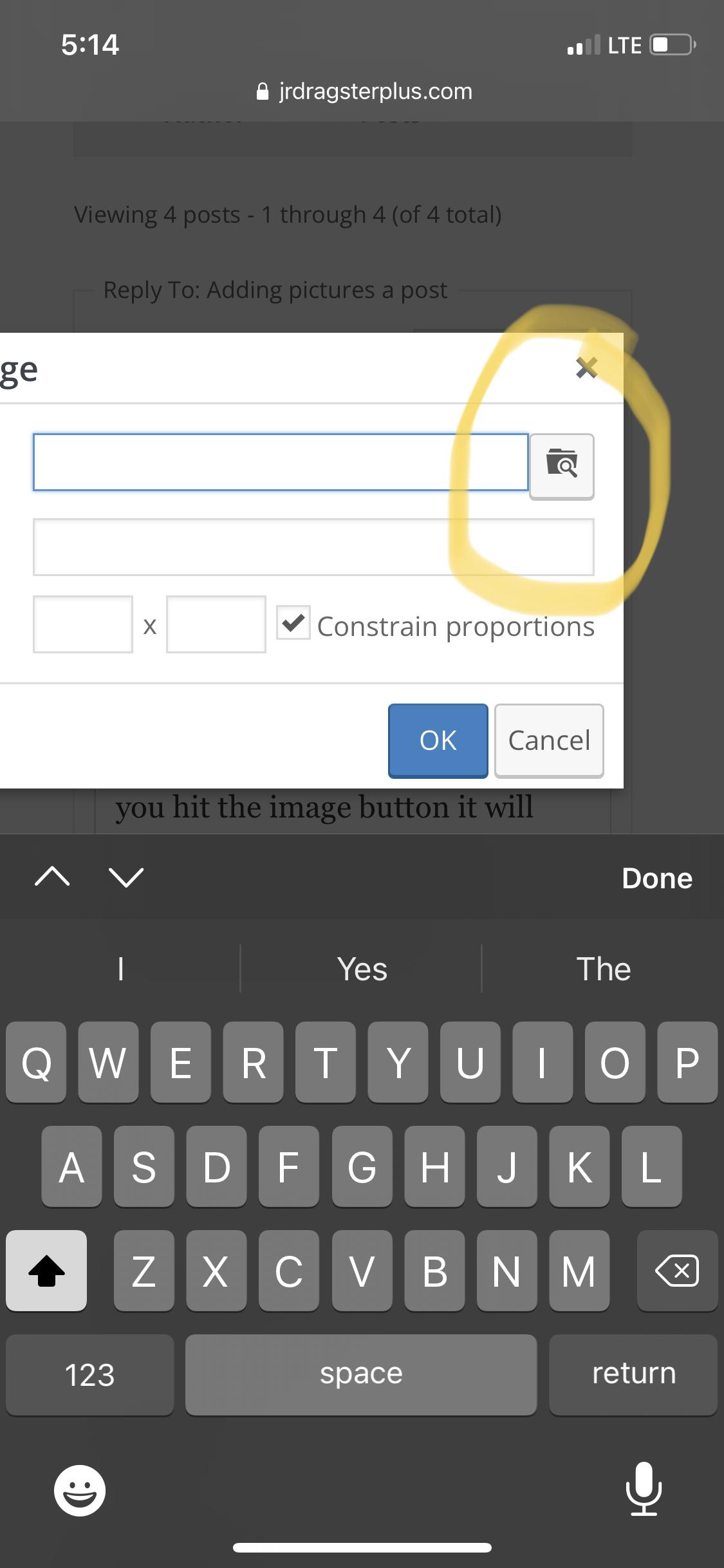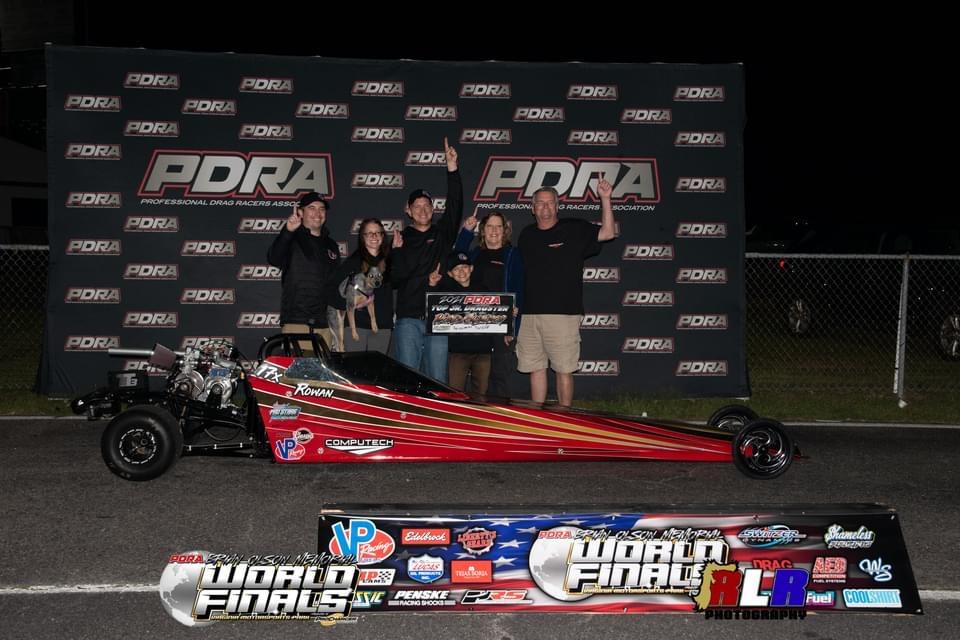Forum Replies Created
-
AuthorPosts
-
So if this is a 33mm Mikuni carb, your main fuel jet is actually the 205 and the pilot fuel jet is the .059.
When you are looking at the back of the carb after taking off the air filter you will see an air jet in the left and the right side. The jet on the left is your pilot air bleed and the one on the right is your main air bleed.
For the main air bleed, most people will typically leave it alone and some even block it off completely. For the main circuit we do nearly all of our tuning on the main fuel jet, the one that is currently at a 205. During the spring and fall a 205 may be ok where you are but you would likely need something a little leaner, like a 195 during the summer months.
Both the pilot air bleed and the pilot fuel jet will get changed on a somewhat regular basis in order to maintain the same starting line temperatures throughout the seasons. The pilot circuit controls all of the air/fuel characteristics when the engine is sitting there idling. So getting the correct air/fuel ratio is essential to getting both a smooth idle and getting the engine temperatures up to a warm enough point.
Think of the pilot air bleed as the fine tune adjustment and the pilot fuel jet as the coarse tuning adjustment. If you wanted to lean out your pilot circuit which will typically result in a smoother idle and higher temperatures, we would start by leaning out the pilot air bleed one or a couple steps at a time. I typically like to stay within a .7 to a 1.1 air bleed and when I reach one of those edges, I will then make a pilot fuel jet change and also an air bleed change.
.6 & .59, .7 & .59, .8 & .59, .9 & .59, 1.0 & .59, 1.1 & .59, .8 & .57, .9 & .57, etc…
To summarize, the pilot circuit controls how smooth your idle is and what tempearutre the engine gets up to on the starting line. The main circuit controls everything after wide open throttle and is responsible for down track performance.
The only Mikuni tool that I am aware of that can help you with this is our RaceBase software. It has a Mikuni tuning tool that will tell you what jet to change your main jet to in order to maintain the same air/fuel ratio mixture you are used to.
www.Computech.com
If your car is slowing down or stumbling off the line when the temps drop then your issue is likely either your not getting the engine warm enough, or your air / fuel mixture is off and your hitting your lean wall.
So the more likely of the two is that you are having an issue where the temp drops and the engine isn’t getting enough heat in it. If this is the case, we can confirm it by looking at what the cylinder head temp was at the zero time point of both the run where it was fine and the run where there was a problem. If there is more than a 15 degree difference then a lack of heat in the engine is likely the culprit.
If you need to get more heat in the engine, the easiest solution is to install a lean out valve. This will allow you to lean the car up on the starting line to help build temperature easily. Then you just close the valve when its at temp and your back to your normal idle rpm. The other option is to lean out your pilot, however I would do this before a race and not in between rounds if we can avoid it. Either go up on your air bleed or open your air bleed screw more and it should cause that starting line temps to be warmer.
If the issue is truly a jetting or air / fuel mixture issue then you’ll likely be able to see it in your graph and the starting line temps will be similar. If the weather is cooling and the humidity grains aren’t jumping, then it means that we are adding more air to our air / fuel mixture. And if you stumble when that happens it means you don’t have enough fuel and you likely need to richen your entire mixture by increasing your main jet size. It would mean that you have hit your lean wall.
With our RaceBase software we have a Mikuni jetting program that you would be able to enter your jetting information in, tell it you want to richen it by 2% and it will tell you what jet size to run. It will then allow you to maintain that same air / fuel mixture throughout the entire season. We used in in the @RowansRacing Top Jr Dragster this season and we didn’t have to move more than 15 pounds the entire season.
www.Computech.com
What size jet are you running and do you have any graphs that you can post so we can see what is going on. Preferably the graph before the night change, the graph after the night change and then both of the graphs laid over top of each other. Without seeing the graphs or knowing the weather, I would say you are either hitting the dew point and the humidity grains are shooting up or the weather is changing enough that you are hitting your tuning wall.
When you live in a humid area there is a lot of moisture in the day but the sunlight is constantly eating it up. At night time without the sun that moisture, or humidity grains, will jump up and cause there to be a lot more moisture in the air than when the sun was up. This causes the engine to loose power and go slower. The only way to compensate for this is to have a weather station like the RaceAir Cloud that will be able to monitor the weather and then a program like our RaceBase software that will automatically tell you how much you will pick up or slow down based on that additional moisture.
If you are not seeing the humidity grains go up but the performance is still dropping, then it may be that you have hit your tune up wall. Now most people that race juniors and even many engine builders will say that you never need to change your jet but I personally believe that to be out of ignorance or laziness. The reality is that as the seasons change, so does the quality of the air, and if you are not changing your jets to compensate for that, then you air / fuel mixture is changing and thus how much horsepower you can create is changing.
Think of your tune up like the scales of justice. In one hand you have air and the other hand you have fuel. If you drop your air hand down because the summer kicked in and the weather is worse and you don’t change your jet, then you’re air fuel mixture has changed whether you like it or not. And thus how much horsepower you create has changed. If you go to far lean, you get lean spikes and pops down track. If you go to rich you get bogs and inconsistencies at shift. Either is not ideal and if you think of your tune up like a room where rich is one wall and lean is the other, then we want to stay as close to the center of that room as possible. That way if a big weather change does happen during race day, we may move within that room but we won’t hit a wall where we really see a performance problem.
At Computech we have been running the @RowansRacing junior dragster for a couple years and have built the RaceAir Cloud with RaceBase software with junior dragster racing in mind. That’s why we have an easy to customize et prediction formula to help you predict those day to night changes better. We have a mikuni tuning program to keep you tuned the same from week to week and we even have an index weight prediction to help you dial the 7.90, 8.90 or 11.90 index. If you run a Jr. Dragster, having the RaceBase software gives you a competitive advantage over your competition who doesn’t.
www.Computech.com
It is a little more difficult to add an image through the phone. I’ll try to work on that tonight. But, when you hit the image button it will give you a source text box. You have to scroll over to the side a little and hit the button to browse your photos.

www.Computech.com
I’m going to test through my phone here to see if that works.

www.Computech.com
There shouldn’t be anything special to it. Is it just text or images too? Perhaps there’s a limit on the number of images I’m not aware of. Can you try again and if it fails private message me. I would like to take control of your computer and see what’s happening so I can resolve it for the future.
www.Computech.com
From what I know, when companies started making the billet bowls they didn’t include the necessary parts to make the accelerator pump work.
Personally I like having the extra bit of fuel right at the hit. It prevents the engine from starving and give it that extra bit of fuel it needs to get going.
www.Computech.com
Do you know what the total weight of the car is with driver right now? In general I have found that a heavier car is more consistent and less effected by the wind. I consider anything under 430 light and anything over 530 heavy.
Also, do you know what it ran with the previous kid and what the driver weight difference is? Knowing what the current engine, clutch and gearing combo is gives us a baseline to adjust from.
So you may be better off leaving it alone and adding the weight but it would help if we knew where your weight is. And I know these engines can get really angry and temperamental if they don’t have the right amount of fuel. Choking it down that much may cause more problems.
www.Computech.com
-
AuthorPosts







